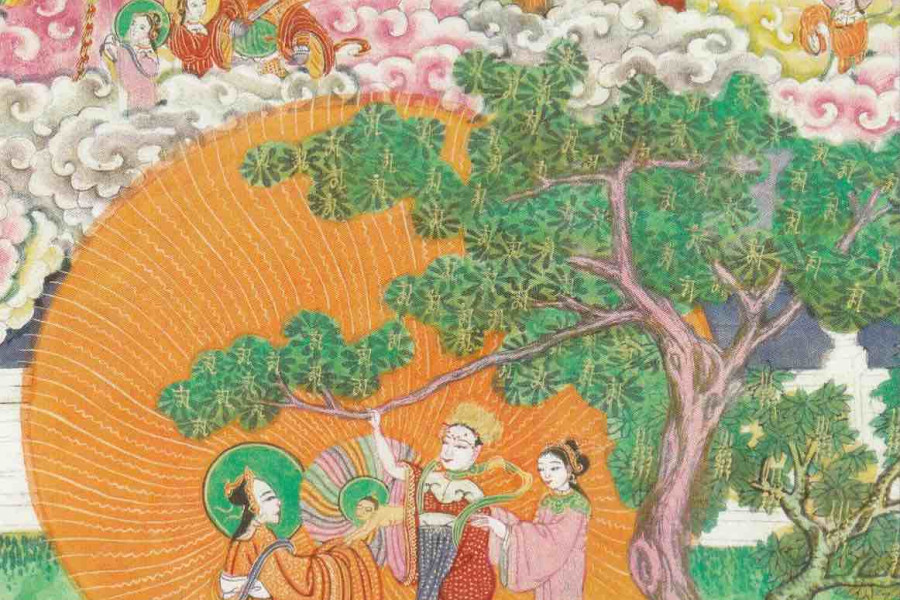
Martin Goodson
Review; Buddhism - The British Library Exhibition

Buddhism - British Library Exhibition
Review: Buddhism - The British Library Exhibition.
Showing until 23rd February 2020
The British Library, located on the Euston Road, has housed the book and manuscript collections of The British Museum since the closure of the latter’s Rreading Rroom in 1997.
A popular venue, squeezed between Euston and St. Pancras stations, it has featured a wide range of fascinating exhibitions. This exhibition of Buddhist texts, books, and artefacts, which runs up until 23rd February, continues the tradition.
The collection is arranged into four areas: The Buddha, Buddhist Philosophy, Buddhist Practice and The Spread of Buddhism.
Whilst the display cases are well lit, the visitorsr’s walk in twilight ambience with a ‘soundscape’ made up of forest sounds;, birdsong, the breeze in the trees and flowing water, interspaced with the sound of chanting - always in the distance - in the many languages of the countries through which Buddhism has moved. Indeed, this choice of manuscripts and books carefully reflect and represent the countries, great and small, whose culture has been impacted by the world’s fourth largest religion.
Overall, what strikes is the impact of Buddhist influences at all levels of society and areas of life. We see manuscripts with stories for children with illuminations of warm saffron and forest green. There are contemporary manga comics telling the story of Prince Gautama all nestled between manuscripts of Tantric initiation and the Ssutta books inlaid with mother-of-pearl used for bhikkhu ordination. There are copies of gold and ivory books commissioned by high ranking officials for the alleviation of the suffering of deceased family members, amulets and talismans for travel, house protection, and also mantras and prayers for help in childbirth. too.
There are Buddha and Bbodhisattva statues (rupas), and even a ‘lonely’ prayer wheel, but being the British Library, the emphasis is on books and manuscripts - including some of the oldest examples from the Dunhuang caves.
Even European culture featuresd a somewhat disguised influence in of the life of the Buddha in the story of ‘Barlaam and Josephat’, which was a popular medieval Christian tale;. ‘Josephat’ being a corruption of the Sanskrit word ‘Bbodhisattva’. Twentieth century depictions showing illustrations from the Buddha’s life-story in one hanging picture show a half-naked ascetic using an iPhone to snap a picture of the Prince on his four fateful excursions from the Palace to witness old age, sickness and death.
There are also additional audiovisuals showing the spread of Buddhism from Kapilivastu in the NE Indian and Nepalese area to the whole of the Indian continent including Sri Lanka. This is followed by the spread of Mahayana from the universities of Northern India to Tibet and China, through SE Asia and into Japan. This wave is followed by the third expansion of Buddhist Dharma in the form of Vajrayana, again from India to Tibet, China and Mongolia.
There is also some rather contemplative black-and-white film of Japanese calligraphy to view before having the chance to ring a temple gong before leaving.
This is an exhibition that I would recommend, if you haven’t seen it already. Although it has been on since October there is still time to go and if you can catch it when it is not too busy, then I hope you find it as peaceful and uplifting as this reviewer!




